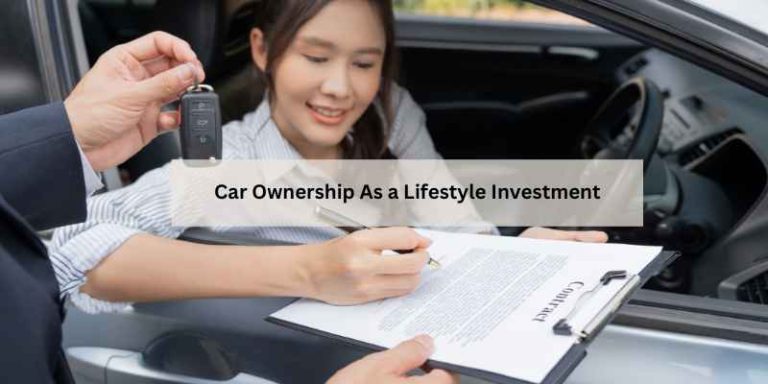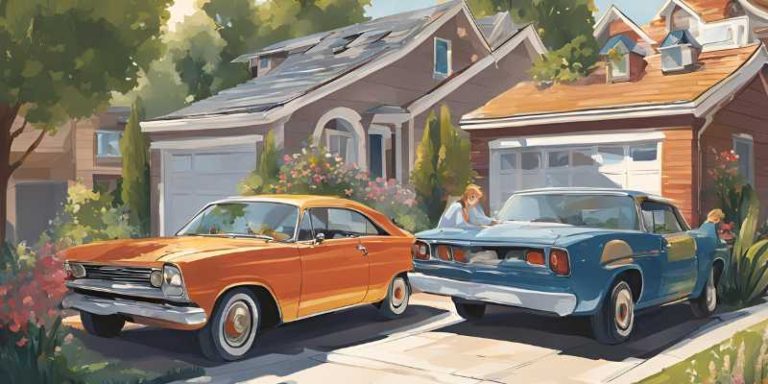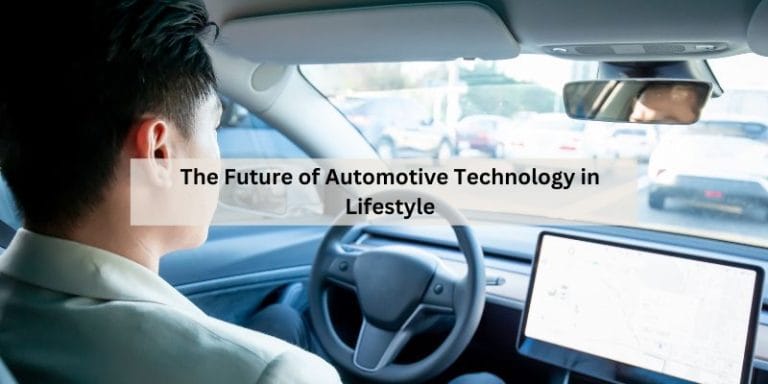The Connection between Outdoor Recreation And a Car-Centric Lifestyle
The connection between outdoor recreation and a car-centric lifestyle is significant, as a car-centric lifestyle often hinders opportunities for outdoor activities and promotes sedentary behavior. In car-centric cities, where the design and infrastructure primarily cater to private vehicles, the emphasis is placed on ease of vehicle access rather than promoting active transportation or creating outdoor spaces for recreational purposes.
This reliance on cars discourages people from engaging in outdoor activities such as walking, cycling, or exploring nature, ultimately leading to a less active and healthy lifestyle. As such, it is crucial to recognize the impact of a car-centric lifestyle on outdoor recreation and explore ways to prioritize active transportation and create more accessible outdoor spaces for the community.
Introduction To Car-centric Lifestyles
The term “car-centric” refers to urban environments that prioritize private vehicles in their design and infrastructure. This often involves extensive road networks and large parking areas, with a focus on vehicle access over other transportation methods. Such cities can have a significant impact on daily life, influencing how people commute, socialize, and engage with their surroundings. The rise of car-centric cities has led to environmental challenges, including air pollution and habitat loss. Additionally, economic initiatives and policies have further fueled car ownership in the United States, with subsidies, tax breaks, and investments in road infrastructure prioritizing individual car use. This car-centric urban design has also been linked to health issues such as heart disease and obesity, highlighting the broader implications of a car-centric lifestyle on community well-being.
Exploring Outdoor Recreation
The modern lifestyle often revolves around cars and the convenience they bring. However, this car-centric approach has led to a disconnection from nature and outdoor activities. Engaging with nature through outdoor recreation offers numerous benefits, including physical exercise, stress reduction, and improved mental well-being. Some of the most popular outdoor activities include hiking, camping, cycling, and birdwatching. These activities not only promote a healthier lifestyle but also foster a deeper appreciation for the environment. By prioritizing outdoor recreation, individuals can reduce their reliance on cars and embrace a more sustainable and fulfilling way of life.
Effects Of Car Dependency
Car dependency in urban areas has devastating environmental consequences, both locally and globally. Car-centric cities are designed to cater to private vehicles, with extensive road networks and large parking areas, often at the expense of other transportation methods. This setup leads to air pollution, sprawling habitat loss, and contributes significantly to climate change.
Moreover, car ownership is heavily subsidized in the United States, with tax breaks, investments in road infrastructure, and cheap gasoline making driving more cost-effective. This economic initiative and policy have further fueled car ownership, making it difficult to curb car dependency.
Car-centric urban design also leads to urban sprawl, where residential and commercial areas are spread out, making it challenging to access daily necessities without a car. This lifestyle encourages sedentary habits, leading to heart disease and obesity.
Therefore, a shift towards people-centric urban planning is necessary, with a focus on active transportation and parks and recreation. Such a move would promote physical activity, improve air quality, and support community and public health.
Car-centric Design Vs. Outdoor Accessibility
The term “car-centric” refers to an urban environment that primarily caters to private vehicles through its design and infrastructure. This often involves extensive road networks, large parking areas, and urban planning that prioritizes vehicle access over other transportation methods. The result is a city that is heavily dependent on cars, impacting community connectivity and public health. Economic initiatives and policies in the United States have further fueled car ownership through subsidies, tax breaks, and investments in road infrastructure. Additionally, the availability of inexpensive gasoline has made driving more cost-effective. Car-centric cities not only affect the environment through air pollution and habitat loss but also contribute to lifestyle illnesses like heart disease and obesity. Urban planning plays a crucial role in addressing the challenges posed by car-centric design and promoting outdoor accessibility for all residents.
Health Implications
The car-centric lifestyle is linked to several lifestyle illnesses that stem from a lack of outdoor activity. These illnesses include heart disease, obesity, and other related conditions that can lead to poor health outcomes. However, outdoor recreation can be an effective way to combat these negative health effects. By engaging in outdoor activities, people can improve their physical and mental health. Outdoor recreation provides an opportunity to exercise, socialize, and enjoy nature, all of which contribute to improved health.
Furthermore, outdoor recreation has several psychological benefits. It can reduce stress, improve mood, and increase self-esteem. These benefits can lead to improved mental health outcomes, which are just as important as physical health outcomes. Therefore, it is important to prioritize outdoor recreation and make it a part of our daily lives, especially in car-centric cities where access to outdoor spaces may be limited.
Economic And Policy Influences
Car-centric cities have become the norm in the United States due to economic initiatives and policies that prioritize individual car use. Subsidies, tax breaks, and investments in road infrastructure have further fueled car ownership. The availability of inexpensive gasoline has made driving more cost-effective than other transportation methods. This has resulted in extensive road networks, large parking areas, and urban planning that prioritizes ease of vehicle access over other modes of transportation.
However, this approach has led to negative impacts on the environment, including air pollution and sprawling habitat loss. Car-centric urban design also leads to road crashes, “lifestyle illnesses” like heart disease and obesity, and contributes massively to climate change. On the other hand, investments in green spaces and active transportation can provide a healthier and more sustainable alternative to car-centric cities.
The relationship between parks and recreation and active transportation interests is critical – and is sometimes overlooked by both the public and policymakers. As such, it is important to consider the impacts of economic and policy influences on outdoor recreation and a car-centric lifestyle, and to promote alternative modes of transportation that prioritize community well-being and environmental sustainability.
Moving Towards A Balance
The connection between outdoor recreation and a car-centric lifestyle is complex. Integrating car use with outdoor lifestyles is crucial in many areas. For example, successful urban designs in some cities prioritize active transportation and parks and recreation to encourage a balance. However, car-centric cities pose challenges, such as environmental damage, loneliness, and urban sprawl. The difference between car-centric and people-centric cities lies in the prioritization of convenience. In the United States, economic initiatives and policies have historically fueled car ownership, with subsidies, tax breaks, and inexpensive gasoline influencing car dependency. The impact of urban planning and car dependence on climate cannot be ignored, as car-centric designs contribute to road crashes, air pollution, and lifestyle illnesses.
Future Perspectives
The future perspectives of outdoor recreation are intertwined with the shift away from a car-centric lifestyle. Embracing alternative modes of transportation and creating more pedestrian-friendly environments will be vital in promoting sustainable and accessible outdoor activities. This transition not only fosters environmental benefits but also encourages healthier and more connected communities.
| Future Perspectives |
| Shifting towards climate-friendly transportation |
| As we move towards a more sustainable future, it is important to consider the impact of our transportation choices on the environment. One way to promote climate-friendly transportation is by encouraging walkability and providing access to nature. By creating safe and accessible pedestrian and bike paths, people can choose to walk or bike instead of relying solely on cars. Additionally, parks and green spaces provide opportunities for outdoor recreation and can be easily accessed by foot or bike. By prioritizing these modes of transportation and making them more accessible, we can shift away from a car-centric lifestyle and towards a more sustainable future. |
Frequently Asked Questions
What Does “car-centric” Mean?
“Car-centric” refers to urban environments that prioritize private vehicle access with extensive road networks and large parking areas. This design focuses on making it easier for people to use cars rather than other transportation methods.
How Car-centric Cities Affect The Environment?
Car-centric cities have a significant impact on the environment. They contribute to air pollution, habitat loss, and climate change due to the heavy reliance on private vehicles. These cities prioritize car accessibility through extensive road networks and large parking areas, neglecting other forms of transportation.
This car-centric lifestyle has detrimental effects on both local and global ecosystems.
What Is The Difference Between Car-centric And People Centric?
Car-centric refers to cities and environments that prioritize private vehicles, with extensive road networks and large parking areas. People-centric cities, on the other hand, prioritize human convenience over car travel. These cities are designed to enhance the quality of life for residents, focusing on walkability, public transportation, and creating spaces that promote social interaction and community engagement.
Car-centric cities rely heavily on cars for daily activities, while people-centric cities prioritize alternative modes of transportation and prioritize the well-being of individuals.
Conclusion
The connection between outdoor recreation and a car-centric lifestyle is undeniable. As car-centric cities prioritize private vehicles, it becomes easier for individuals to access outdoor recreational areas. However, this reliance on cars has negative consequences for the environment, contributing to pollution and climate change.
It is essential to strike a balance between promoting outdoor activities and adopting more sustainable transportation options. By investing in active transportation infrastructure and encouraging alternative modes of travel, we can create healthier and more environmentally friendly communities. Let’s strive for a future where outdoor recreation and sustainable transportation go hand in hand.




